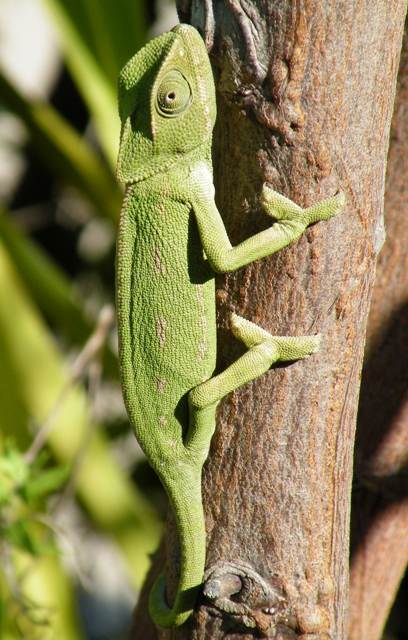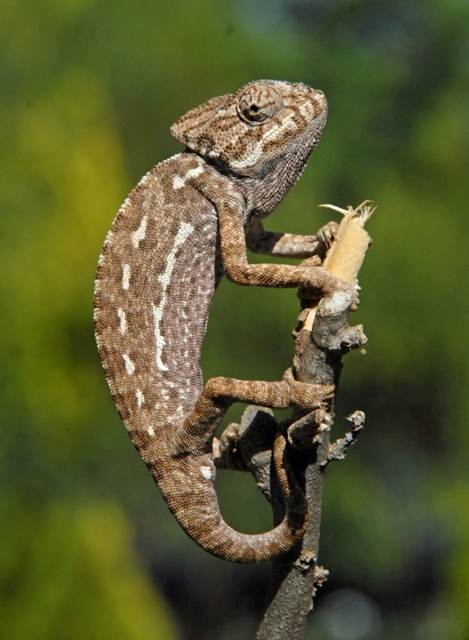At One with Nature
Camouflage: Conceit or Deceit?
Sue Parker looks at the artful dodgers among us
Would the real Donald Trump please not stand up!
Unless suffering from a depressive disorder leading to low self esteem, most people have unrealistically positive views of themselves. For example, very few people would claim to be bad drivers. Whatever the truth of the matter, we all want to sound and look better than we really are, and so instinctively we adopt façades that help us to project the image we want other people to have of us. By their very nature façades are fragile: superficial and false, they don’t reflect at all the kinds of people we really are.
Introverts often present themselves as being thoroughly outgoing life-and-soul-of-the party types. Another trick entails making sweeping generalisations on subjects we know very little about - a tactic often doomed to failure when a tricky and specific question ensues. So much better to admit that we don’t know rather than to wing it. But, ‘Honestly, I wouldn’t know a pot from a bucket’ is no way to impress an audience and convince them that you are, as well as everything else, a world authority on Etruscan pottery.
Back to Donald Trump. If the façade that portrays him as a racist, women-hating, gun-loving, anti-immigrant wall-builder is displaying his better side, please don’t let us ever find out what kind of person he really is! Perhaps he is the exception to the rule, and his façade is designed to make us think he is far worse than he really is. Maybe deep down, he is a cuddly, kind and tolerant person... is anyone buying this? Or is he, as I fear, simply a wolf in wolf’s clothing?
As far as we know, animals do not set out to deliberately fool us into thinking they are something that they are not; however, evolution has equipped some creatures with the ability to disguise their persona in far more convincing ways than any of our façades ever could.

The Buff-tip Moth looks just like a broken-off birch twig
The most obvious reason for an animal to change its appearance is to conceal and protect itself from predators, but research is revealing that other factors such as signalling between creatures of the same species or temperature regulation may also drive appearance and colour change too.
Night-flying moths have to rest somewhere during the day, at which time they are most at risk from predators. This explains why so many of them are patterned with pale browns and greys rather than being darker to conceal themselves during nocturnal hunting activities. For example, when Pine Hawk-moths settle on tree trunks or branches during daylight hours, their wing patterns blend almost seamlessly with the pine tree bark. The Buff-tip Moth has gone a step further: not only is it the same silvery-grey colour as a birch twig, but it is also the same shape as a broken-off piece of twig. Other evolutionary tricks that moths use to protect themselves include looking like something particularly distasteful, such as bird droppings – easy enough to spot, but not as we might think, of being sound or enjoyable nutrition.

A European Chameleon in green garb
Closer to home we have one of the masters of disguise: the Mediterranean Chameleon. In fact the effectiveness of its disguise is such that it is probably far more numerous in the Algarve than many of us would believe. Chameleons spend most of the time in bushes and are remarkably hard to spot, but in September, following mating, the females descend to the ground in order to lay their eggs. This is the best time to go looking for them. Having hidden from us so effectively most of the year, their behaviour suddenly seems almost cavalier, and they can often be spotted casually strolling around - even crossing busy roads in search of a suitable site to deposit the next generation.

..... and brown
For a long time it was thought that the dramatic colour change achieved by chameleons was due to the distribution of pigments within their skins, but recent research has revealed that this is only part of the story. Chameleons have two colour-control layers within their skins and they may serve also as a temperature control mechanism. The upper layer contains a network of so-called nanocrystals which, when stimulated, determine which wavelengths of light are reflected and which are absorbed. In a relaxed state the crystals reflect green and blue, but when stimulated they reflect various colours such as orange, green, yellow and red. The lower skin layer appears to work in a similar fashion and controls the amount of infrared light that is absorbed or reflected and, in this way, may provide thermoregulation. Whatever the science behind the chameleon’s ability to change colour, it does not affect our enjoyment of this amazing creature when we are lucky enough to spot one.
In the meantime I shall continue to avoid any activity that could lead to even the remotest chance of running in to The Donald. New motto: If you see Donald... duck!

